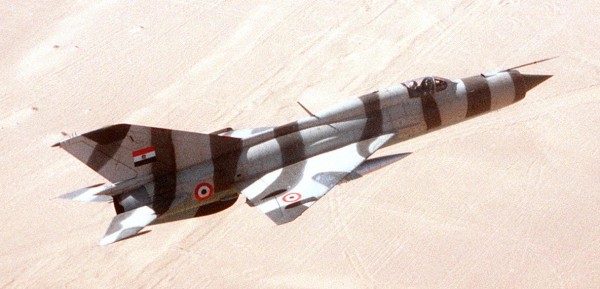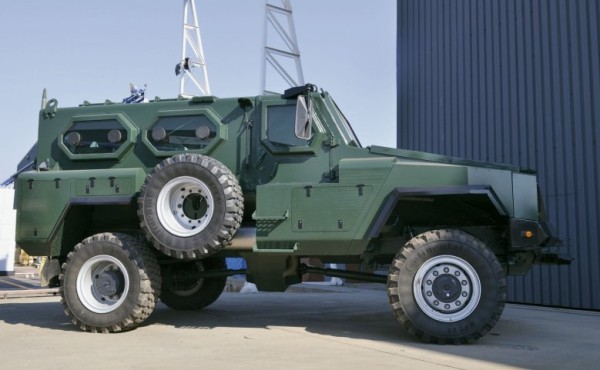Top 10 African Arms Industries
1. South Africa
The South African arms industry is considered one of the most advanced in the non-Western world today, on par with fellow IBSA partners, India and Brazil. The wide-ranging locally-made weapons—some of which were categorized as crowd-control equipment—included transport and attack helicopters, armored personnel carriers, military trucks, internal security vehicles, assault rifles and hand guns.
Although weapons production has slowed considerably since the official end of apartheid, Pieter Wezeman, senior researcher, Arms Transfers Program at the Stockholm International Peace Research Institute, says the South African arms industry has advanced in a few niche areas such as certain light armored vehicles and anti-tank missiles. The country’s weaponry and other military equipment are in high demand in many countries throughout the world, from the United States to China, and from Sweden to Zambia.
2. Ethiopia
A report released by Agence France-Presse (AFP) confirms that Ethiopia is home to perhaps one of the most powerful armies in Africa. Though weapon production began in the 1800s under Emperor Tewondros, today, the country also has a pretty lucrative industry pertaining to weapon production. Ethiopia produces small arms, rifles and grenades propelled by rockets. According to the AFP report, Ethiopia has a defense budget of roughly $400 million dollars.
3. Egypt
According to an article composed by Joe Stork, the deputy director of Human Rights Watch’s Middle East and North Africa division, Egypt has been producing its own arms since the 1820s. Their products included “warships, artillery, rifles, bombs and ammunition.” And, while the country did see a temporary decline in weapon production, Egypt’s arms production began to rise after the second World War. The government established ammunition and small arms companies, as well as aircraft factories. Today, Egypt is one of the top weapon producers on the continent of Africa.
4. Ghana
According to a 2013 essay entitled “History Of Locally Manufactured Weapons In Ghana History Essay,” Ghana has been producing weapons for hundreds of years. Pistols, shotguns and single-barrel guns are locally manufactured and “each of the 10 regions in Ghana houses gun-manufacturing workshops.” The Suame-Magazine area of Kumasi, located in the Ashanti region, is perhaps “one of the most established gun-manufacturing centers in Ghana.”
5. Kenya
Established in 1997, the Kenya Ordnance Factories Corporation (KOFC), under the Ministry of State for Defense, is a corporation that manufactures small arms. In late 2012, Assemble Mamba Mk 5 armored personnel carriers, and aims to produce 100 in its first year of operation. Kenya has domestic capacity to produce small arms and ammunition.
Kenya refuses to open up its factories for independent verification of their facilities despite ratifying the UN Arms Trade Treaty. Until inspectors are allowed in no one knows what else the Kenyan arms industry is creating.
6. Nigeria
Nigeria manufactured weapons as early as the 1960s, due to the establishment of the Defense Industries Corporation (DIC). In fact, Nigeria developed its own version of the Automatic Kalashnikov 47 (AK47). The Director General of the Defense Industries Corporation of Nigeria (DICON) stated that “the Nigerian new rifle was named after Obasanjo because the president was the second sitting Head of State to visit DICON after General Yakubu Gowon.”
The Nigerian army, one of the biggest in Africa, should have little difficulty scattering the amateur jihadists. But its arsenal is decrepit and its troops poorly trained. Hence the government’s decision to spend $1 billion on new aircraft and training, among other things. Critics question how much will go towards appropriate kit (never mind how much gets stolen by corrupt generals) and whether it is sensible to lavish resources on a force implicated in atrocities and human-rights abuses.
7. Sudan
According to a report released by gunpolicy.org, Sudan established “at least three weapons factories outside of Khartoum.” While production began in 1959, the country saw an increase in production after the establishment of the Military Industry Corporation (MIC) in 1993. According to a 2014 article published by Radio Dabanga, the MIC produces ammunition, conventional weapons, armored vehicles and main battle tanks. The corporations also provides vehicles.
8. Tanzania
As early as the 4th century AD, the people in what is now called Tanzania specialized in producing tools and weapons. Today, according to the Stockholm International Peace Research Institute’s Policy Paper No. 30, Tanzania’s Mzinga Corporation “reportedly had an annual production capacity of 7 million rounds.” In addition, a report released by gunpolicy.org states that the country “has small arms ammunition factories.”
9. Namibia
In Namibia, Windhoeker MaschinenFabrik (WMF), under the Namibian Defense Force, “has manufactured small numbers of wheeled light-armored vehicles since 1977, including some for export,” according to Policy Pap No. 30. A post on wmf.com.na confirms that the company is “operating as a wholly owned commercial arm and subsidiary of the August 26 Holding Company (Pty) Ltd, an undertaking of the Ministry of Defense.”
10. Uganda
According to research conducted by The Library of Congress, between 1870 and 1899, the king of Bunyoro, Kabarega, constructed a powerful army through the use of contemporary weapons, such as Remington rifles, percussion muskets and breech and muzzle loaders. The report from gunpolicy.org expresses that today, Uganda “also has small arms ammunition factories.” There are at least three weapon manufacturers in the country.
African Countries That Manufacture Some of Their Own Weapons | Africa Facts







